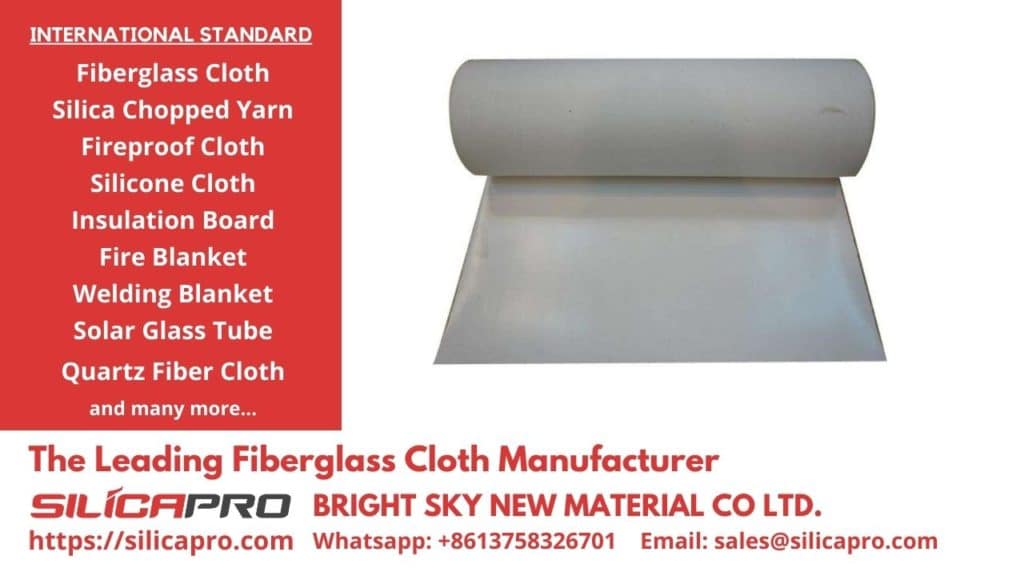Fiberglass is a product of processing glass fiber by adding other materials such as silica, coating, resin, and other materials. So, the outcome of fiberglass is a strong and flexible material. Then, customers can adjust to what is needed. Additional ingredients in the manufacturing process, the amount of calcium, magnesium, and boron oxides, also affect the strength level. The impact is that there are different types of fiberglass.
Contents
Different Types of Fiberglass Based on Material Characteristics

Initially, fiberglass was a material composed of pure silica combined with glass. If it only consists of these two components, it will be hard to produce fiberglass material. For this reason, putting other materials into the mixture can create the fiberglass that many people know today.
The silica content in fiberglass is usually greater than 50 percent of all its constituent components. Meanwhile, the different characteristics come from the composition of mineral oxides. It will have a significant influence on the products produced.
In other words, there are many ‘flavors’ of different types of fiberglass that can meet the needs of different uses. The addition of these substances certainly brings suitable properties for every usage. So, below are the types of fiberglass based on the characteristics of the material.
Fiberglass Categories
- Fiberglass category A (alkali) if there is the addition of materials with high alkaline characteristics such as soda lime.
- Fiberglass category C (chemical), type is generally the result of combining fiberglass with materials with high chemical resistance.
- Fiberglass category D is for fiberglass with low dielectric constant properties.
- Fiberglass category E is associated with low electrical conductivity properties. It is a versatile type of fiber because it is electrically resistant and strong.
- Fiberglass category M fiberglass for high tensile modulus fiberglass properties
- Fiberglass category S generally for fiberglass has high tensile strength. Besides, this category also covers the characteristics of high rigidity, intense temperature resistance, and corrosive resistance.
- The ECR category has long-term acid resistance but short-term alkali resistance
- The R&Te fiberglass category is suitable for those of you who are looking for fiberglass that can withstand high temperatures and high tensile strength.
In practice, if you need a composite with high chemical resistance, you should choose fiberglass with category C glass fiber. The different types of fiberglass above are indicators that each category has many benefits for personal or industrial needs.
Why are There Many Different Types of Fiberglass?
For people involved in the world of fiberglass, of course, it is not surprising that there are various types of fiberglass. There are not only one, two, or three but even dozens more types of fiberglass with different names based on the material used. This is what is surprising to lay people about why there are so many types of fiberglass. It confuses everyone because the appearance of fiberglass is the same at first sight.
It turns out that these differences have various backgrounds and factors that influence the amount of fiberglass.
- The first is the ever-growing use of fiberglass. The more functional fiberglass is, the more it needs to be adapted to apply to many industries.
- The material that makes up fiberglass influences many types of fiberglass. Fiberglass is a composite material, meaning it combines glass fiber with other materials. Other materials mixed with fiberglass are what create the many variations of fiberglass.
- The final factor is related to the various ways in which the fibers are arranged. The varied fiber arrangement is the reason why there are many types of fiberglass. Fiberglass manufacturers create the fibers randomly or weave them into the fabric.
Are There Any Types of Dangerous Fiberglass?
Many questions arise regarding the dangers of inhaling fiberglass. The short answer is that they do not harm the respiratory system. Even if the material breaks and the fibers fly freely into the air, the chances of this situation being dangerous for breathing are very small. However, there are types of fiberglass that are harmful if you inhale them, for example, Glass S2. If you inhale these particles, it is difficult for your lungs and body to break them down.
It is just as dangerous when you inhale wood or metal particles into your lungs. If you think this can disrupt your respiratory health, it’s the same case if you inhale different types of fiberglass. In small amounts, it is not dangerous. To avoid this danger, you can wear a dust mask as protection.
